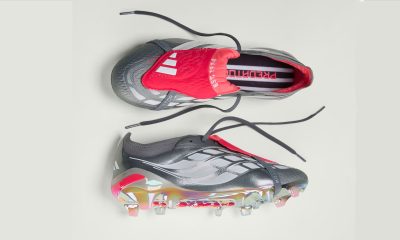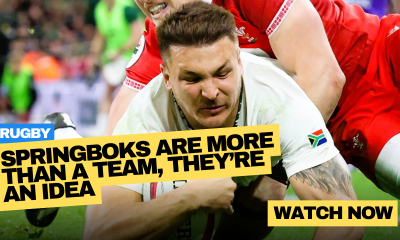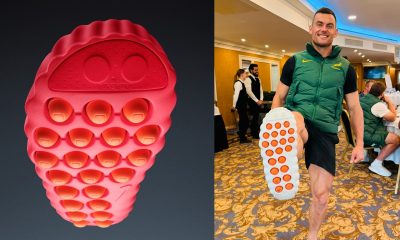Gear
Football & Rugby Boot Buying Guide for South Africans
Find the perfect pair of boots using our handy boot-buying guide.

Buying new soccer or rugby boots should be as easy as waltzing into a store and grabbing the first pair that fit; however, anyone who’s played enough team sports knows that not all boots are created equal. Finding the right boot for you, especially in South Africa, can be a bit tricky, so we’ve put together a handy guide on how to get the most bang for your buck when you decide to pick up a new pair of boots.
Soccer boots vs. rugby boots
Many ask the question: is this a rugby or soccer boot? While some boot models and brands highlight that certain boots are specifically designed for either football or rugby, the reality is that most of these boots are interchangeable and can be used for anything. Of course, there are some metal-studded rugby boots (as well as some for football too), which are probably best for each respective purpose; but we’ll get into that more.
What you need to know is that most boots can be used for anything, whether it be soccer or rugby.
Soleplate: FG vs SG

You may note that some boots feature metal or metal-tipped studs, while some have plastic moulded studs. These two types of stud configurations determine what type of ground the boots are actually designed for, not the sport itself. Metal studs feature on boots known as ‘SG’ boots, standing for ‘soft ground’. These boots are designed to be used on softer, wetter, and thicker-grasses surfaces.
Then, plastic studded-boots are known as ‘FG’ boots, standing for ‘firm ground’. These are natural grass surfaces, often more finely mowed and featuring a solid surface underneath, like what you’d most commonly find across South Africa.
The reason for this distinction is that metal studs (on SG boots) will penetrate deeper into soft ground and provide more traction on slippery, thicker grass. FG plastic studs are shorter and slightly flexible, allowing you to get traction on harder grass pitches, while still maintaining their flexibility for comfort and safety purposes.
While you will see a lot of rugby players playing with SG boots on hard, firm grounds, it is advisable to opt for FG plastic stud boots on these types of surfaces, but the preference is yours. FG boots may not have enough ‘grip’ for some wetter fields, while SG boots may feel too ‘hard’ and uncomfortable on hard fields, so it’s about finding the traction that suits the fields you’ll most likely be playing on regularly.

There are certain SG boots, most notably in the Adidas range, which have interchangeable studs, allowing you to take the metal studs out and put plastic TPU ones in using a boot wrench. This does make SG boots adaptable to play on harder surfaces, but keep in mind, the soleplate will never be as flexible as an FG pair of boots, given that SG soleplates still have the metal threads in them in order to screw studs in and out, whereas FG soleplates are purely moulded plastic and can bend freely.
There are also ‘AG’ boots, made for artificial grass, and these ideally should be used when playing five-a-side soccer on artificial pitches. Turf boots (identified by TF) can also be used. This recommendation is due to the fact that some FG boot studs can ‘cling’ to artificial grass (sometimes, too much traction is not a good thing), which can lead to injuries. SG (metal) studs should not be worn on artificial pitches at all.
Understanding the boot tiers
The boot market itself features a lot of brands and types of boots, but it can be overwhelming to understand why one boot costs a fortune and another is fairly cheap, yet they look so similar.
All the big brands feature multiple tiers of the same boot model, in order to offer a pricing option for all types of players. For example, when Nike releases their new Mercurial Vapor boot, it’ll come in four different versions (Elite, Pro, Academy, and Club), all looking fairly similar, but upon close inspection, the materials and build quality will be different for each model.
Boot brand tier breakdown
Below are the boot brand naming conventions to identify the ‘tier’ of boot which they fall into (from most expensive to cheapest):
- Mizuno: Elite -> Pro -> Select (for example, Mizuno Morelia Neo III *Elite* – this means it’s the top model)
- Nike: Elite -> Pro -> Academy -> Club (for example, Nike Tiempo Legend 8 *Club* – this means it’s the low takedown model)
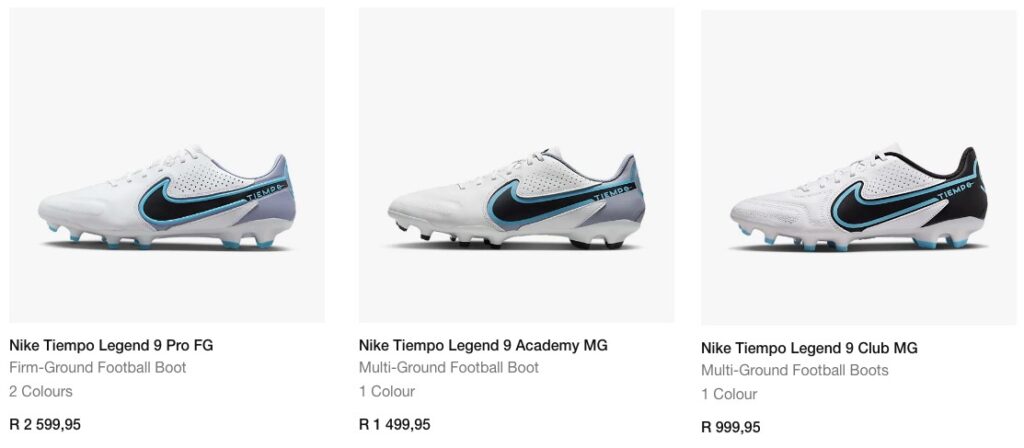
- Adidas: + (laceless) -> .1 -> .2 -> .3 -> .4 (Adidas uses a ‘decimal point’ numerical system to identify boot tiers. For example, Adidas Predator Accuracy *.3* – this means it’s the second takedown model)
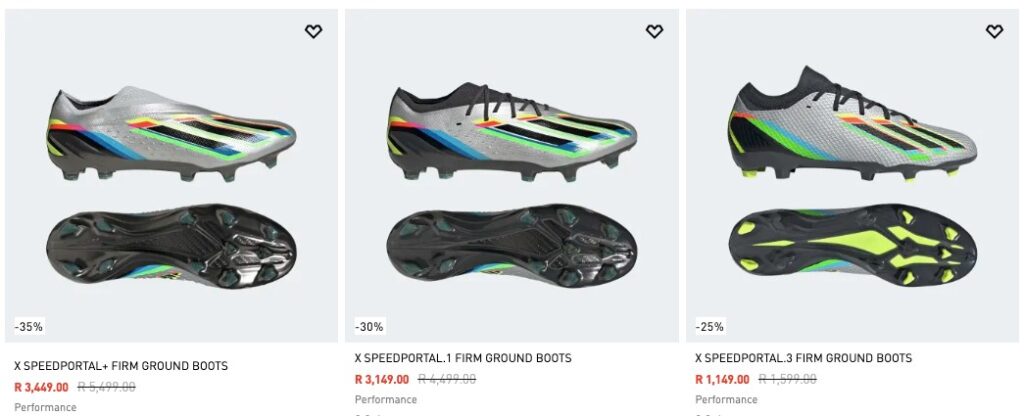
- Puma: .1 -> .2 -> .3 -> .4 (Similar to Adidas, Puma uses a similar point decimal system in the naming conventions. For example, Puma Ultra Ultimate 1*.1* – this means it’s the elite/top model).
- UPDATE: Puma has since introduced a new naming convention for the latest generation of boots: Ultimate -> Pro -> Match -> Play (with Ultimate being the highest tier, and Play being the lowest).
While other countries tend to stock all tiers of boots, South African retailers don’t tend to have many ‘elite’ or ‘.2’ versions of the boots on sale. You’ll often have to purchase directly from the brands to find these.
Buying tip: Read the model name and do some research
Instead of just grabbing what looks cool or what’s the most convenient on the shelf, find a boot that’s right for you. Boots have different pros, cons, widths, lengths, and stud patterns which could make for a more enjoyable use and help avoid injuries.
To find out more about what’s available on the market, check out our boot reviews for more information.



